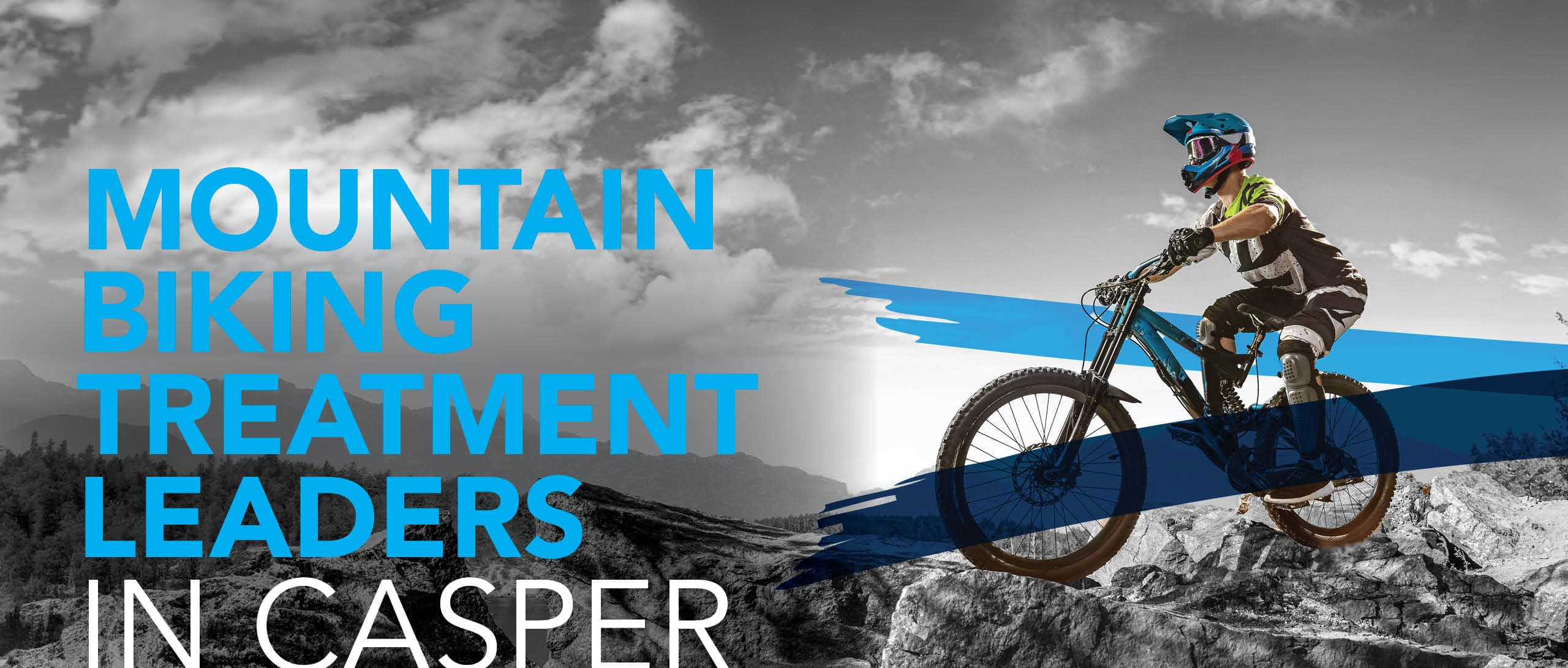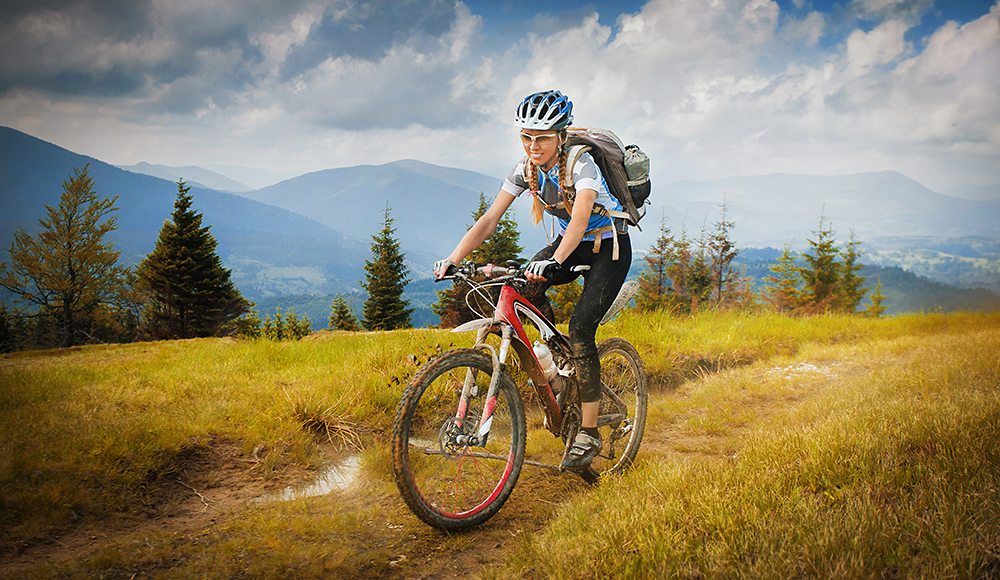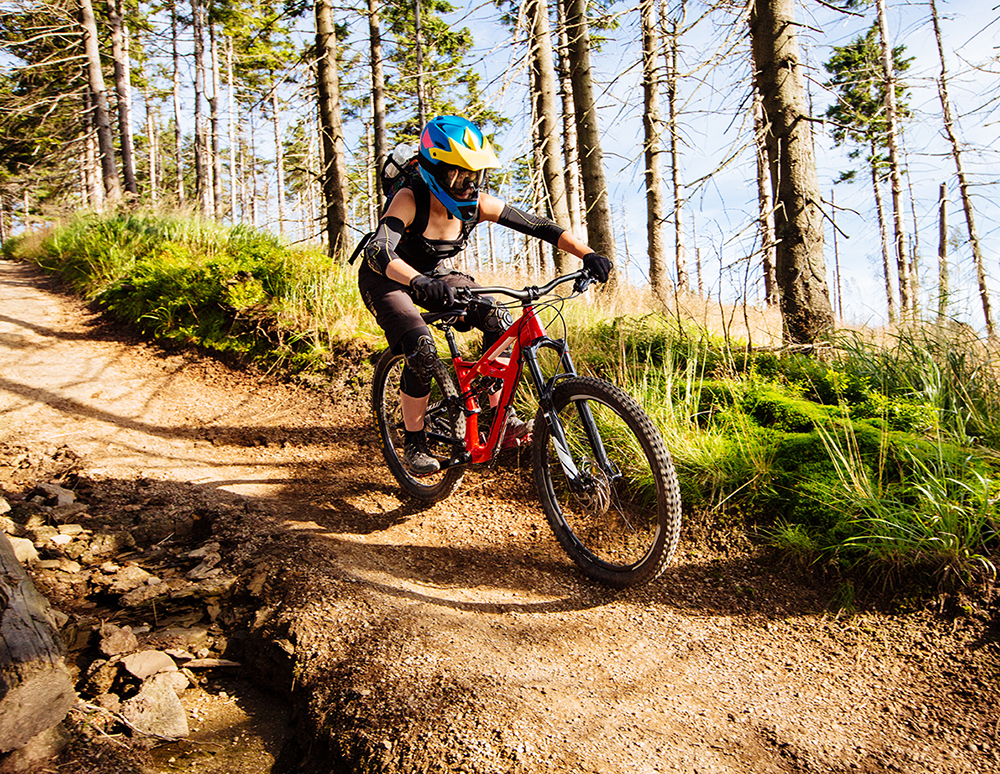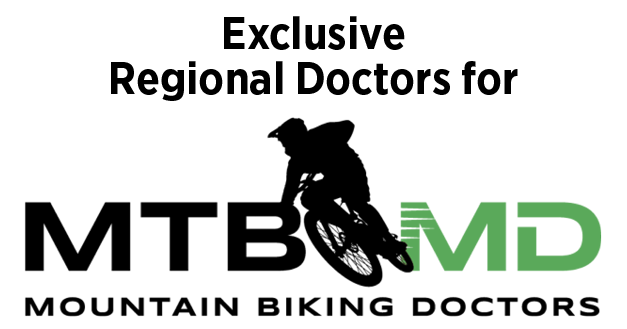
Casper Orthopedics is a top choice for specialized care tailored to the unique needs of mountain bikers. We strive to keep you riding without interruption, helping you continue enjoying your sport effortlessly.
Mountain biking offers numerous health and fitness benefits, but it also carries the risk of injury. Understanding the unique needs of each rider, we collaborate with specialists who have the expertise and experience to help you recover and get back on the trails through targeted orthopedic care.
In the world of sports medicine, we remain dedicated to helping athletes reach their performance goals and return to sport safely. For mountain bikers, choosing the appropriate sports medicine doctor is crucial for a successful recovery post-injury.
At Casper Orthopedics, our team has board-certified and fellowship-trained experts dedicated to providing diagnosis and treatment for mountain biking injuries. Using their expertise, our team of experts is ready to deliver the necessary care for your recovery. Working with one another, our doctors create treatment plans that are suited to your individual needs, ensuring you can get back on the bike and continue doing what you love.
Our mountain biking injury experts at Casper Orthopedics are proud to be Mountain Biking Doctors. Offering expert tips for injury prevention, performance, and more, Mountain Biking Doctors is a group of elite doctors dedicated to helping you ride the trails at your best.
Preparing for Mountain Biking & Preventing Injury
Just like all sports, mountain biking has its own unique risks. However, through preparation and prioritizing safety, the risk of injury can be significantly reduced. Implementing strength training, conditioning, and targeted stretching into your routine heightens your preparedness for the next ride. Additionally, following expert-designed workout routines or warm-up programs can provide even greater benefits.
The exercises found below emphasize injury prevention and are curated by experts at Casper Orthopedics who are renowned for their expertise in addressing mountain biking injuries in Wyoming. We created this full workout regimen to prepare riders for peak mountain biking performance. By adding these exercises into your routine, you can enhance your riding abilities and take proactive steps toward injury prevention.

Prevention Exercises
Exercise 1
Hip Flexor Stretch
Step 1. Put one knee on the ground and the other leg extended behind you in a lunge position.
Step 2. Your front foot should be flat on the ground and your thigh parallel to the ground.
Step 3. Slowly push your hips forward until you feel a stretch in your hip muscles.
Step 4. Hold stretch for 30 seconds.
Step 5. Repeat on the other side.
Exercise 2
Hamstring Stretch
Step 1. Begin by sitting on the ground, extending one leg straight in front of you and bending the other leg so that the sole of your foot rests against your inner thigh.
Step 2. Gently lean forward, extending your hands toward your toes until you sense a stretching sensation in your hamstring.
Step 3. Hold for 30 seconds.
Step 4. Repeat on the other side.
Exercise 3
Glute Bridge
Step 1. Start by lying on your back with your knees bent and your feet resting flat on the ground.
Step 2. Press through your heels, elevating your hips toward the ceiling, and contract your glutes when you reach the peak of the movement.
Step 3. Gradually lower your hips back to the starting position.
Step 4. Repeat for 10 to 15 reps.
Exercise 4
Clamshell
Step 1. Begin by lying on your side with your knees bent and your feet close together.
Step 2. While ensuring your feet remain in contact, raise your upper knee toward the ceiling, contracting your glutes at the pinnacle of the motion.
Step 3. Gently lower your knee back to its original position.
Step 4. Repeat for 10 to 15 reps on each side.
Exercise 5
Plank
Step 1. Begin in a push-up stance, aligning your hands directly beneath your shoulders and maintaining a hip-width separation between your feet.
Step 2. Maintain a straight, rigid line from your head to your heels, ensuring proper body alignment.
Step 3. Hold for 30 to 60 seconds.
Exercise 6
Bird Dog
Step 1. Begin in a hands-and-knees position, with your wrists positioned directly under your shoulders and your knees aligned under your hips.
Step 2. Extend your right arm forward and simultaneously stretch your left leg back, making sure to keep your hips level throughout the movement.
Step 3. Hold for 2 to 3 seconds, then switch sides.
Step 4. Repeat for 10 to 15 reps on each side.
Exercise 7
Squats
Step 1. Begin by positioning your feet at a shoulder-width distance and point your toes either directly ahead or slightly outward.
Step 2. Flex your knees and descend, shifting your hips back and down while maintaining an upright chest posture and directing your weight into your heels.
Step 3. Propel yourself back to a standing position by pushing through your heels.
Step 4. Repeat for 10 to 15 reps.
Exercise 8
Lunges
Step 1. Stand with your feet separated at hip width and take a forward step with one foot while simultaneously bending both knees to lower yourself back to the ground.
Step 2. Maintain a 90-degree angle with your front knee and keep your back knee hovering slightly above the ground.
Step 3. Elevate yourself back to a standing position by pushing up with your front foot.
Step 4. Repeat on the other side for 10 to 15 reps.

When to Be Seen
Training or riding while in pain is strongly advised against, as doing so can lead to prolonged or even indefinite recovery times. To avoid worsening the condition or causing a more serious injury, it's crucial to seek timely evaluation from an orthopedic specialist.
Our experts know that an accurate and skillful diagnosis is a key component of an effective treatment plan for any injury. Request an appointment online or call (307) 265-7205 to consult with one of our specialty-trained sports medicine doctors if you experience any of the following symptoms:
- Difficulty bearing weight on your foot or leg
- Lingering pain in a muscle or joint despite rest and icing
- A fall on the trail causing a popping sensation in your back, shoulder, knee, elbow, hip, or wrist
- Instability in your ankle, hip, knee, shoulder, or elbow
Common mountain biking injuries include:
Back or knee pain
Broken collarbone, wrist, or ankle
Concussions and other head injuries
Joint dislocations
Overuse injuries
Sprains and strains
Torn ligaments
Comprehensive Care for Mountain Bikers
Your comfort and well-being are our top priorities at Casper Orthopedics. Our team of mountain biking injury specialists offers a unique blend of expert care and compassionate attention. We work closely with you, considering all the factors that make you unique, to develop a personalized treatment plan for your injury or condition. Our approach includes a full range of services, from education and rehabilitation to medical and surgical care, ensuring you receive comprehensive support to help you excel in all areas of life.
Our experienced doctors always focus on conservative, nonsurgical treatments first. If surgery is necessary, they are skilled in the latest minimally invasive techniques, ensuring a safe, quick, and effective recovery while providing the best overall experience.
Common Mountain Biking Treatments
For every mountain biker we treat, we create customized care plans that address their specific needs. Below is an overview of common treatments provided by our specialists in mountain biking injuries.
To learn more about any of these treatments, click on the links provided.
OrthoCare Now
At Casper Orthopedics, we know that injuries don’t fit into anyone’s schedule. With our OrthoCare Now, you can be seen the same day you sustain an injury, which saves you on cost and time by skipping the ER.











